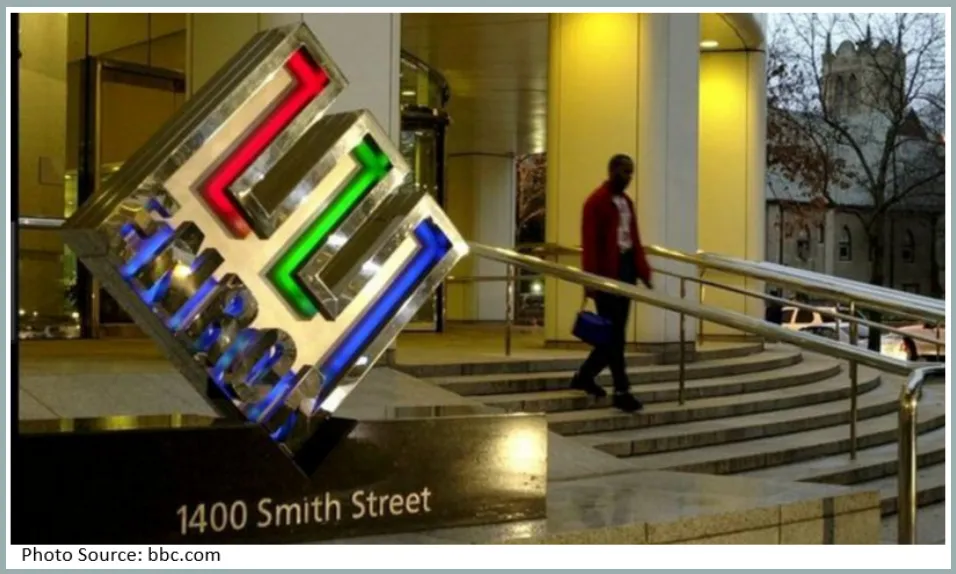
Today, I’m going to discuss and summarize a classic case in Business Ethics classes. The title of this case is Financial and Accounting Fraud at Enron.
Let me first give you a brief history of this infamous company. Enron Corporation was a former American energy, commodities, and services company based in Houston, Texas. The company was created out of the merger of two major pipeline companies, InterNorth, Incorporated and Houston Natural Gas Company in 1985. At the height of Enron’s operations, the company employed approximately 20,000 personnel, and was one of the world's major electricity, natural gas, communications, and pulp and paper companies. Enron was even named "America's Most Innovative Company" by the Fortune magazine for six consecutive years, from 1996 to 2001. However, at the end of that year, 2001, investigations revealed that its reported financial gains were sustained by institutionalized financial and accounting fraud, and filed for bankruptcy on December 2001.
The objective of this case is to illustrate the unethical corporate culture that dominated Enron. This discussion will also show how it is possible for a respected and prestigious company can be plagued with unethical and illegal business and accounting practices, which resulted in its collapse. This summary will also explain how stakeholders and gatekeepers failed at stopping Enron in conducting business malpractices.
The whole Enron case is multi-faceted and involves many players, which include Ken Lay’s political ties with the Bush family, and former California Governor Arnold Schwarzenegger especially during the California Energy Crisis. Ken Lay, as we all know is Enron’s Chairman at the height of the scandal. But this discussion will be focusing on one unique feature of the Enron case, that is how a number of individuals, including executives, employees, lawyers, auditors, and even bankers and financial analysts dishonestly worked together, and turned a blind eye to achieve Enron’s financial objectives. This happened despite the fact these corporate financial objectives were illegal and unethical, and often not in the best interests of both internal and external stakeholders.
Central to the Enron case is the use of special purpose entities (SPEs). The company’s SPEs like Chewco, Whitewing, Jedi and the others were used to understate its liabilities, and overstate its equity and earnings. SPEs were utilized to evade accounting standards, while the company disclosed to its shareholders that it had hedged downside risk in its own illiquid investments using these dummy companies. Investors were unaware of the fact that these SPEs were actually using Enron's own stock and financial guarantees to finance these hedges. Thus, it actually does not protect Enron from the downside risk. These kinds of financial maneuverings made Enron's financial statements complicated and confusing to shareholders, analysts and investigators. The complex financial model and unethical accounting practices cooked by the chief financial officer (CFO) Andrew Fastow required the company use accounting limitations to misrepresent earnings and modify the balance sheet to indicate favorable performance.
These fraudulent financial and accounting activities were supposed to be detected by the so-called gatekeepers (for example: lawyers, internal and external auditors, analysts and regulators) to ensure that business’ dealings are transparent and legal. Unfortunately, in Enron, these gatekeepers, failed to make sure that the company conducted business in a way that was in compliance with the law. To give some specific examples, the law firm Vinzon and Elkins blocked a demand for a larger investigation by the company Vice-President Sherron Watkins involving questionable financial partnerships of Enron with SPEs; and have been involved in facilitating the creation of certain dubious financial transactions. The auditor Arthur Andersen gave certifications on financial reports that did not accurately show Enron’s financial health, and also acted both as a consultant and auditor to the company. A clear sign of conflicting interests. Other large financial institutions around the world like J.P. Morgan Chase and Citigroup were also likely involved in allowing Enron to carry out its business malpractices.
So long as Enron continued to make large profits, and pay their dues to these gatekeepers and other related stakeholders, no one dared to ask questions. This is also what possibly happened inside the company, several employees had opportunities to uncover ethical lapses, but very few questioned Enron's practices, because they feared for their jobs being under a powerful and influential organization like Enron.
This is the end of the first part. See you on the second part.